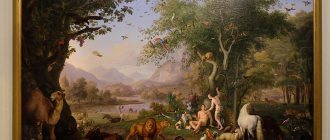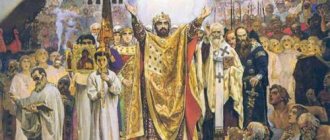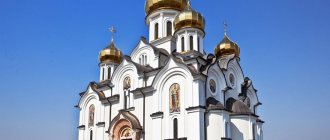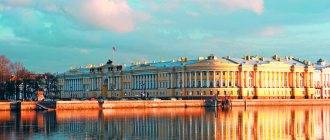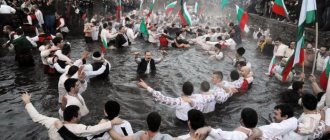The Christian Church in the early Middle Ages had great power over people. The people were very angry and ignorant. Their condition was negatively affected by the environment - mass diseases and regular crop failures. The clergy found an explanation for such phenomena, saying that all disasters are not accidental. They were sent by God as punishment so that every person would rethink his behavior.
General characteristics of the Middle Ages
The Middle Ages lasted almost a thousand years - from the 5th to the 15th centuries. During this historical period, huge changes took place in world history: the colossus of the Roman Empire collapsed, then Byzantium. After the conquest of Rome, barbarian tribes created their own states on the European continent with a defining national culture.
During this period, a lot of changes occur in the world in all areas of state development.
These changes did not spare culture and religion. During the Middle Ages, each nation had its own history of cultural development and the influence of religion on it.
At all times, people needed to believe in something, hope for someone, worship someone, fear someone, explain the inexplicable with something, and all peoples had their own unknown.
There were pagans, Muslims, Christians, etc.
At this time, Christianity was considered the main religion in the West and in Rus'. But, if the Russian Middle Ages were considered the XIII-XV centuries, then in the West this is the end of the Middle Ages and the Renaissance, i.e.
the most prolific years in the formation of Western European culture. In our country, at least the first two of these three centuries correspond to defeat, cultural isolation from the West and stagnation, from which Rus' was just beginning to climb out at the very end of the 14th and 15th centuries.
That is why I would like to separately understand how Christianity influenced the culture of Western European peoples and Rus'.
To understand how religion influenced culture, you need to understand how people lived at that time, what they thought about, what worried them and cared most about them then.
The establishment of Christianity as the state religion in some countries, starting from the 4th century, and its active spread led to a significant reorientation of all spheres of late antique spiritual culture into the mainstream of a new worldview system.
All types of artistic activity were directly captured by this process. In fact, the formation of a new theory of art began, the preconditions of which had already developed in the early Christian period. The Fathers of the Church made their significant contribution to this process.
General characteristics of the Middle Ages
In the Middle Ages, natural farming was primitive, productive forces and technology were poorly developed.
Wars and epidemics bled nations dry. The Inquisition suppressed any thought that ran counter to church dogma, brutally dealing with bearers of heretical teachings and those suspected of collaborating with the devil.
At this time, machines began to be used, windmills, a water wheel, steering, book printing and much more appeared.
The very concept of “the Middle Ages” cannot in any way be a kind of integrity.
There are Early, High Middle Ages and Decline. Each period has its own characteristics of the spiritual sphere and culture.
The clash of cultural orientations gave rise to the multilayered and contradictory nature of the consciousness of medieval man. The commoner, living at the mercy of folk beliefs and primitive images, had the beginnings of a Christian worldview.
Prince-bishops of other states
England
The Bishop of Durham had the status of prince-bishop in England. The prerogatives of a secular ruler of the lands along the lower Tyne and north of it to the Scottish border were first granted to the Bishop of Durham in 1075 after the execution of Earl Waltheof and the liquidation of his Northumbrian earldom.
In 1086, the area north of the Tyne came into the possession of Robert de Mowbray and subsequently became the County of Northumberland, while the lands south of it remained under the control of the Bishop of Durham, forming County Durham. The last county, which was of great importance in organizing the defense of the Anglo-Scottish border, received the rights of the palatinate, which provided broad autonomy in internal affairs and independence from the judicial administrative system of the Kingdom of England. In particular, the Prince-Bishop of Durham had the authority in the territory of his county to convene his own parliament and organize military forces, appoint sheriffs and judges, establish his own laws, establish and levy taxes and duties in his favor, organize fairs and approve charters, mint his own coins, manage royal forests and benefit from mining revenues. These rights placed the Bishop of Durham in an exceptional position in the system of the feudal hierarchy of medieval England.
In 1300, Prince-Bishop Anthony Bec described his status as follows:
There are two kings in England: the Lord King of England, who wears a crown as a sign of his sovereignty, and the Lord Bishop of Durham, who wears a miter instead of a crown as a sign of his supreme authority in the diocese of Durham.
In 1536, the judicial powers of the Bishop of Durham were significantly limited by Henry VIII, who was pursuing a policy of strengthening central power in England.
In 1646, during the English revolution of the 17th century, the autonomy of the palatinate was abolished, but after the Stuart Restoration it was restored. The Union of England and Scotland in 1703 deprived Durham of any strategic importance, turning the real rights of the bishop into an anachronism. The principality-bishopric was finally liquidated in 1836; in 1882, Durham also lost its role as the leading church center in Northern England after the formation of the bishopric of Newcastle upon Tyne. Finally, in 1971, the separate palatine courts were abolished, finally bringing County Durham on an equal footing with the rest of England.
France
Palace of the Archbishops of Rouen - World Heritage Site
The decentralization of the French kingdom under the last Carolingians contributed to the formation of ecclesiastical principalities based on lands and regal rights granted to bishops and archbishops by kings. The institutions of the French church were part of the feudal hierarchy of the country; bishops, abbots and priors could be vassals or overlords of secular rulers in one or another land ownership, and, accordingly, enter into a relationship of homage, take an oath of allegiance and receive investiture to their lands. France was characterized by the insignificance of the territory of the secular possessions of bishops, as well as such a method of acquiring secular power by church hierarchs as inheritance, purchase or receipt as a gift from the former owners of counties and seigneuries, without excluding these lands from the feudal-feudal pyramid. Regional bishops gradually came under the control of local secular rulers (counts and dukes), who possessed large land and financial resources. However, starting from the 11th century, a strong alliance between the French church and the French kings developed and the process of consolidation of feudal estates, including church estates, under the authority of the king began to develop. In the 12th-14th centuries, the kings of France managed to achieve recognition of direct suzerainty over most of the country's ecclesiastical territories and extend the royal judicial and administrative systems to the lands of bishops. This led to the gradual elimination of the independence of church principalities. Bishops, however, continued to bear the temporal titles of counts or dukes in respect of territories formerly in their fief, six of them being the highest peers of the kingdom and having precedence over the secular aristocracy of France.
Bishop-peers of France:
| Other bishop-counts of France:
|
|
Montenegro
The metropolitans of Cetinje, the rulers of Montenegro until 1852, are often also considered prince-bishops. The sources and nature of the secular power of the Montenegrin metropolitans, however, were not of a feudal nature, like that of the prince-bishops of Western Europe. Since the 16th century, the Cetinje monastery and its head have been the moral and political center of uniting the disparate Montenegrin and Brdy tribes in the joint struggle for liberation from the rule of the Ottoman Empire. The metropolitans did not have sovereign rights in relation to the Montenegrin lands, although they were the largest landowners in this area. Until the 19th century, the Metropolitan of Cetinje actually served as the head of the confederation of Montenegrin tribes and led its foreign policy. The judicial and administrative system retained a communal-tribal character, and the secular prerogatives of the metropolitan were limited by the existence of the post of governor, responsible for the organization of the armed forces and the exercise of judicial power in Montenegro, and if metropolitans in foreign policy usually focused on Russia, then governors - on Venice.
The strengthening of the power of metropolitans in the first half of the 19th century led to the abolition of the post of governor, the weakening of the influence of tribal elders in the government system of Montenegro and the concentration of all power in the country in the hands of the Montenegrin metropolitan. Under Peter I and Peter II, a centralized administrative apparatus, judicial and police systems were created, subordinate and financed by the metropolitan. The separatist protests of the elders were suppressed, and Montenegro turned into a single state under the rule of the metropolitan. This allowed Danilo I to accept the title of Prince of Montenegro in 1852 and, refusing the post of metropolitan, transform the country into a secular state.
Poland
In addition to the princely bishoprics of Breslau and Kammin, which were part of the Holy Roman Empire, on the territory of modern Poland there was also the bishopric of Warmia (Ermland), which had a special status. It was formed in 1243 as a fief of the Teutonic Order. In 1356, the Golden Bull of Charles IV confirmed the temporal prerogatives of the bishop as the head of a self-governing principality within the Teutonic Order, centered in Frombork. The scope of rights and privileges of the Prince-Bishop of Warmia was quite wide, although he remained subordinate to the Grand Master of the Teutonic Order. After the Battle of Grunwald in 1410, the Bishop of Warmia recognized the suzerainty of the King of Poland, and according to the Peace of Torun in 1466, Warmia, together with the territory of West Prussia, became part of the Polish-Lithuanian Commonwealth as an autonomous principality. The unsettled issue of the status of the Warmian bishopric within Poland led to the war of 1467-1479, as a result of which the privileges of the prince-bishop were confirmed, but the control of the Polish king was established over the procedure for his election. Subsequently, Prince-Bishop of Warmia was included in the circle of the highest Polish-Lithuanian aristocracy with the right to participate in the Senate of the Polish-Lithuanian Commonwealth. The Principality of Warmia retained autonomy in the judicial and administrative systems, had its own representative body (Warmia Sejmik) and armed forces. After the First Partition of the Polish-Lithuanian Commonwealth in 1772, the territory of the Duchy of Warmia was annexed to Prussia, its autonomy was eliminated, and the property of the prince-bishop was secularized.
From 1443 to 1790, the Bishop of Krakow bore the title of Prince of Siewierz. Siewierz and its surroundings were purchased in 1443 by Bishop Zbigniew Olesnicki from Duke Cieszynski, thus becoming the secular possession of the Krakow bishops for the next 350 years. The bishops had a certain level of territorial sovereignty within the Kingdom of Poland, the right to exercise judicial and administrative power in the territory of the principality and organize its armed forces and financial system. The autonomy of the Siewierz Principality was abolished by the Four-Year Sejm of the Polish-Lithuanian Commonwealth in 1790, and its territory was included in Poland.
Baltics
After the conquest of the territories of modern Estonia and Latvia by German crusaders at the beginning of the 13th century and the Christianization of the local population in the Baltic states, the Livonian Confederation was formed in 1228 - a state entity consisting of the Livonian Order and four princely bishoprics: the Archbishopric of Riga, the bishoprics of Dorpat, Ezel-Vik and Courland. The leading role in the confederation was played by the Livonian Order, but the prince-bishops had territorial sovereignty and full power in the territory of their respective possessions. The Baltic ecclesiastical principalities were liquidated during the Reformation of the first half of the 16th century and during the Livonian War of 1558-1582: the Archbishopric of Riga was secularized in 1561. (Riga received the status of a free imperial city), the bishopric of Ezel-Wik - secularized and sold to Denmark in 1560, the bishopric of Dorpat - conquered by Ivan the Terrible in 1558 and abolished, the bishopric of Courland - sold in 1560 to Denmark and transformed into the secular duchy of Courland. According to the Treaty of Vilna in 1561, the territories of the former bishoprics became part of the Polish-Lithuanian Commonwealth and the vassal duchy of Courland (Esel remained under Danish rule).
Portugal
In Portugal, in 1472, the title of Count of Arganil was established, which was awarded to the Bishop of Coimbra. From this time until 1967, the bishops of Coimbra bore the secular title of count, but they did not have sovereign rights over the relevant territory.
Andorra
The territory of modern Andorra was ceded in the 12th century by the Count of Urgell to the Bishop of Urgell. In 1278, an agreement was concluded between the bishop and the Count of Foix, according to which the dual sovereignty of the Bishop of Urgell and the Count of Foix was established over Andorra. This agreement marked the beginning of the formation of statehood of the Principality of Andorra. Until now, the legal heads of Andorra as co-rulers are the President of France (successor to the kings of France and the Counts of Foix) and the Spanish Bishop of Urgell, although in fact power belongs to the local parliament. The temporal prerogatives of the Bishop of Urgell regarding Andorra make him the only modern prince-bishop.
ROLE OF THE CHURCH IN THE MIDDLE AGES GENERAL HISTORY
An educated person was not completely free from pagan ideas. However, for everyone, religion was the undoubted dominant.
The essence of the medieval way of relating to the world was determined by the divine model of the world, which was supported by all the means available to the church (and the state subordinate to it). This model determined the features of the medieval era.
The main features of this model are the following:
- a specifically medieval understanding of the Universe, where God acts as the main world creative force, human intervention in divine affairs was unacceptable;
- medieval monotheism, in which the Universe was conceived as absolutely subordinate to God, to whom alone the laws of nature and the divine cosmos are accessible.
This is a force infinitely more powerful than a person and dominated him;
— man is an insignificant, weak, sinful creature, a speck of dust in the divine world, and particles of the divine world are accessible to him only through the atonement of sins and the worship of God.
The central event of the medieval model of the world was God. The entire complex of the super-complex social hierarchy of events in the medieval world fit into this event.
A special place in this hierarchy was occupied by the church, which was entrusted with a divine mission.
The main population of the Middle Ages were peasants.
2. The process of Christianization in the Middle Ages
The ideological position of the church was that it was actually on the side of the masters, being, moreover, the largest owner. And yet the church tried to smooth out conflicts in society, preaching equality before God, humility and the sanctity of poverty.
The poor experience troubles and hardships on earth, but they are God's chosen ones, worthy of the Kingdom of Heaven. Poverty is a moral virtue.
The medieval church recognized work as a consequence of original sin. Working to get rich was condemned. The work of an ascetic - work to eradicate idleness, to curb the flesh, for moral improvement - was considered a godly deed.
2.1 Process of Christianization in Europe
In Europe, society in the minds of people was divided into three main social strata: clergy, peasants and knights.
The social ideals were the life of saints and the heroic deeds of the warrior. The process of Christianization proceeded with great difficulties. The state used its authority and power to eradicate paganism and introduce Christianity. The peasant was excluded from the system of public legal rules and could not be a warrior. People who remembered their free ancestors had a hard time experiencing their bondage.
The people associated their freedom and independence with the pagan faith, and Christianization with the power and oppression of the state.
The most comprehensive measures were taken to eradicate pagan superstitions. Particular attention is paid to rituals associated with the cult of the forces of nature. Fortune telling, spells, and divinations were also considered forbidden and were severely punished.
In the fight against paganism, the Church used not only punishment, but also careful adaptation.
Pope Gregory I was a supporter of the gradual replacement of pagan religious stereotypes with Christian rituals. He advised not to destroy pagan temples, but to sprinkle them with holy water and replace idols with altars and relics of saints. Animal sacrifice should be replaced with feast days where animals will be slaughtered for the glory of God and for food. He recommended that instead of the pagan walk around the fields for harvest, processions should be organized for Trinity.
The life of peasants in the Middle Ages was determined by the changing seasons, each person goes through the same cycle of events.
Constant employment and focus on traditions and rituals made it impossible to go beyond the cyclical framework.
Christianity, instead of the cyclical flow of time, natural for the peasant, implanted a linear historical flow of time with the Super-event of the Last Judgment at its end. Fear of retribution for sins becomes a powerful factor in joining Christianity.
The reverse process also took place - Christianity adopted paganism and subjected it to changes.
This was due to several reasons. One of them was that the priests themselves were often from peasant backgrounds and in many ways remained pagans. Another reason was that the worship of saints was associated with the needs of the majority of the population, who were unable to understand the abstract God and needed to worship a visible, understandable image. The clergy exalted the saints for their piety, virtues, and Christian holiness; the flock valued them, first of all, for their ability to perform magic: the ability to work miracles, heal, and protect.
Medieval man existed on the verge of oblivion: famine, wars, epidemics claimed many lives, almost no one lived to old age, and infant mortality was very high. Man felt an urgent need for protection from dangers approaching from all sides.
The Church could not help but take on the functions of magical human protection.
Some magical rituals passed into Christian rituals almost without changes. Moreover, the church even multiplied and complicated ritual life. The veneration of God was carried out in the Christian church through sacraments such as communion, baptism, and priesthood. Also used were blessed water, bread, and candles. Blessed objects were used at home and in everyday life. Theologians saw only symbolism in all this and did not recognize their supernatural power.
Common people used them primarily as amulets: not for cleansing from sins and communion with God, but for protection from diseases, slander, and damage.
Peasants even used church gifts to heal livestock.
Excessive ritualization emasculated the spiritual essence of faith and mechanized communication with God. Rituals degenerated into mechanical, meaningless repetition. Believers, in order to cleanse themselves of sins, could do without a high spiritual attitude, just by formally performing rituals.
The Church could not abolish superstitions, rituals and rites that distorted the foundations of the Catholic faith, for they were an integral part of the mentality of medieval man, and without them Christian teaching could not be accepted.
2.2 The process of Christianization in Rus'
The first centuries of Russian medieval culture. Coming mainly from the period of Kievan Rus, they are permeated with the bright joy of learning something new, discovering the unknown.
In the light of the new worldview, the natural world, man himself, and their relationships appeared different before the Slav, not to mention the spiritual, which sanctified all seemingly familiar things and phenomena with a new light.
The traditional rather narrow horizons - geographical and historical, social and spiritual - have expanded indefinitely.
Realizing all this, and most importantly - himself as the goal and crown of creation, the image of the Creator himself, man, with childish spontaneity, rejoiced at the discovery of the world. His entire life and work are filled with a joyful worldview; his aesthetic consciousness is inspired by it; Finally, it acted as an important stimulus for the rapid rise of culture in Kievan Rus.
Christianity in the Middle Ages
The role of the church in the life of Western European medieval society, which many historians call Christian society or the Christian world, was comprehensive: religion and the church filled the entire life of a person in the feudal era from birth to death.
The church claimed to govern society and performed many functions that later became the property of the state. The medieval church was organized on strictly hierarchical principles. It was headed by the Roman high priest - the pope, who had his own state in Central Italy; archbishops and bishops in all European countries were subordinate to him.
These were the largest feudal lords, possessing entire principalities and belonging to the top of feudal society. Having monopolized culture, science, and literacy in a society consisting mainly of warriors and peasants, the church had enormous resources that subordinated the man of the feudal era to it. Skillfully using these means, the church concentrated enormous power in its hands: kings and lords, needing its help, showered it with gifts and privileges, trying to buy its favor and assistance.
At the same time, the church pacified society: it sought to smooth out social conflicts, calling for mercy towards the oppressed and disadvantaged, for an end to lawlessness, and for the distribution of alms to the poor. Poverty was even given moral priority. The Church attracts under its protection many peasants in need of protection, provides them with land for settlement, and encourages the liberation of other people's slaves, who at the same time became dependent on it.
In turbulent feudal times, people sought the protection of the monastery.
The monastery was also the most demanding owner, preserving the most severe forms of feudal exploitation. The Church was the largest landowner in the feudal world and tirelessly increased its material wealth. Monasteries were among the first to switch to commodity farming, to production for the market, taking treasures and money for storage, and providing loans. Under the auspices of the church, in conjunction with church holidays, fairs and markets arise, pilgrimages to holy places merge with trade travel.
Continuing to use economic power for its own purposes, the church in the XI-XIII centuries. in fact, he heads the trade and colonization movement of Europeans to the East (“crusades”), organizing huge monetary collections to finance them. After the cessation of the “campaigns,” these funds began to be used to strengthen the papal treasury.
The church organization reached its highest power in the 12th-13th centuries, turning into a powerful financial organization with unlimited power over its structures and exceptional political influence.
Taking a conservative position, the church taught that each member of society should live in accordance with his legal and property status and not seek to change it. The ideology of the three “estates,” which spread in Europe in the 10th century, put monks in first place, people devoted to prayer and standing above society.
Crisis of Catholicism
The Pope was a powerful political force until the moment when strong centralized states began to emerge in Europe. Thus, in 1303, the confrontation between Pope Boniface and the French king Philip the Fair led to the “Avignon captivity of the popes,” which lasted more than 70 years. And the “great schism” that occurred immediately after this led to the fact that the church began to actually submit to the kings.
Rice. 2. Boniface VIII.
In 1478, Spanish monarchs established the Spanish Inquisition to persecute heretics. In 1483, it was led by Thomas Torquemada, who created a cruel code to punish dissidents.
Rice. 3. Tomas Torquemada.
The role of the church in the Middle Ages
There was a gradual aristocratization of the clergy and monasticism.
However, along with the official church doctrine in the Middle Ages, popular religiosity was widespread, going far beyond the framework of the church and Christian dogma.
God was perceived as a mysterious force present in sacred places, the personification of goodness and justice. This popular religiosity was shared by the bulk of the priests, with the exception of the church elite - learned bishops and abbots. Of great importance was the belief in intermediaries between God and people - angels and saints, in whom the laity were more attracted not by Christian virtues, but by the miracles they performed, perceived as proof of their power and holiness.
However, one cannot fail to note the positive role of the church and Christian doctrine in the formation of Medieval civilization.
The Church cared for the sick, the poor, orphans and the elderly. She controlled education and book production. Thanks to the influence of Christianity, by the 9th century a fundamentally new understanding of family and marriage had established itself in medieval society; the familiar concept of “marriage” was absent in the late antique and ancient Germanic traditions, and there was no concept of “family” that is familiar to us then.
In the early Middle Ages, marriages between close relatives were practiced; numerous marriage ties were common, which were also inferior to consanguineous ties. It was precisely this situation that the church struggled with: the problems of marriage, as one of the Christian sacraments, have become almost the main theme of many theological works since the 6th century. The fundamental achievement of the church of this period of history should be considered the creation of the marital unit as a normal form of family life that still exists today.
Even technological progress in medieval Europe was associated, according to many scientists, with the spread of Christian doctrine and, as a consequence, with a change in man’s relationship with nature.
We are talking, in particular, about the rejection of the pre-Christian system of prohibitions and taboos that held back the development of agriculture: nature has ceased to be an object of religious worship and a source of fear. The new economic situation, technological improvements and inventions contributed to a significant increase in living standards, very stable throughout several centuries of the feudal era.
Thus, we can conclude that the Middle Ages were a natural and necessary stage in the development of Christian civilization.
In Medieval European society, the human personality as a whole was valued higher than in Antiquity, if only because the medieval worldview, imbued with the spirit of Christianity, did not separate man from the world around him, due to his inclination towards a holistic vision of the world. Consequently, one cannot talk about the spiritual dictatorship of the church over medieval man, which supposedly hindered the development of personality.
In Western Europe, the church usually played a stabilizing, conservative role, that is, it provided favorable conditions for personal development. It is impossible to imagine the spiritual quest of a medieval person outside the church. It was the knowledge of the world and God, inspired by church ideals, that gave birth to the colorful, diverse, living culture of the Middle Ages.
It was the church that created universities and schools, encouraged theological debates and printing.
Comparison
In Orthodoxy there are three degrees of priesthood. The first (lowest) is the deacon (deacon), the second is the priest (priest) and the third, highest, is the bishop (bishop or saint). Priest and archpriest, as is easy to understand, belong to the middle (second) step of the Orthodox hierarchy. In this they are similar, but what is the difference between them, except that the title “archpriest” is given as a reward?
Archpriests are usually rectors (that is, senior priests) of churches, parishes or monasteries. They are subordinate to the bishops, organizing and leading the church life of their parish. It is customary to address the priest as “Your Reverence” (on special occasions), as well as simply “Father” or by name - for example, “Father Sergius”. The address to the archpriest is “Your Reverence.” Previously, addresses were in use: to the priest - “Your Blessing” and to the archpriest - “Your High Blessing”, but now they have practically fallen out of use.
Christianity in the Middle Ages
Due to the presence of dark forces and evil, Medieval culture is often called dualistic (dual): on one pole there is God, angels, saints, on the other there is the Devil and his dark army (demons, sorcerers, heretics).
The tragedy of man is that he can abuse his free will. This is what happened to the first man, Adam. He deviated from the prohibitions of God towards the temptations of the devil.
This process is called the Fall. Sin is the result of man's deviation from God. It is because of sin that suffering, war, disease and death entered the world.
According to Christian teaching, a person cannot return to God on his own. For this, a person needs an intermediary - a Savior. The saviors in the Medieval Christian picture of the world are Christ and His Church (in Western Europe - Catholic). Therefore, along with the category of sin, the problem of saving the soul of each person occupied a large role in the picture of the world of the Middle Ages.
Thus, in Christian ideology, the place of man is taken by God the creator, the place of the concept of “culture”, so valued in antiquity, is taken by the concept of “cult”.
From an etymological point of view, this concept also has the meaning of cultivation and improvement. However, the main emphasis in this concept is on care, worship and reverence. This refers to the veneration of a higher, supernatural power that controls the destinies of the world and man. According to the Christian concept, the meaning of human life is to prepare for the true life, the posthumous, otherworldly life. Therefore, everyday, earthly, real life loses its intrinsic value.
It is considered only as preparation for eternal life, after death. The main emphasis is on the afterlife, afterlife retribution. Salvation is not given to everyone, but only to those who live according to the Gospel commandments.
The whole life of a person in the Middle Ages stands between two points of reference - sin and salvation. To escape the former and achieve the latter, a person is given the following conditions: following the Christian commandments, doing good deeds, avoiding temptations, confessing one’s sins, active prayer and church life not only for monks, but also for laity.
Thus, in Christianity the requirements for a person’s moral life are becoming more stringent.
Basic Christian values are faith, hope, love.
Christianity became the spiritual basis of medieval culture, but regional variants of medieval Christian cultures arose in different ethno-geographical, political, and socio-economic conditions.
The most prominent cultures were Byzantium and the medieval West.
Already from the 3rd century. n. e. The differences between the Eastern and Western Roman Empire became more and more noticeable: the West was in decline, and the position of the East was favorable, since its territories were not subject to invasions by barbarians seeking Rome, the “eternal city.”
In 330, Emperor Constantine I moved the capital to the city of Constantinople, “New Rome.” In 395, the Roman Empire finally collapsed.
This contributed to the separation of the Western Church, led by the Bishop of Rome (Pope), from the Eastern Churches, led by the Patriarchs of Constantinople, Antioch, and Jerusalem. The competition for influence between these churches ended in 1054 with a schism - the “Great Schism”.
Both directions - Catholicism and Orthodoxy - have a number of features in their doctrine, cult and structure of religious organization, reflecting the specifics of the economic and political development of feudal relations in both regions.
The Catholic Church is strictly centralized, has a single world center - the Vatican (in Rome), which is the residence of the Pope. In Catholicism, the pope is considered the vicar of Jesus Christ on earth and the successor of the Apostle Peter.
He is infallible in matters of faith and morality, his power is higher than secular power and ecumenical councils. Secular power in the person of the emperor was given responsibility for earthly well-being and the political unity of society. The secular ruler is only an instrument in the hands of the church, and only the papal blessing puts him above other people. Moreover, the pope has the right not only to crown, but also to remove the emperor.
The rise of the papacy was facilitated by the barbarians who seized the empire and inherited the religion of the vanquished.
They reckoned not with the emperor, but with the Pope, securing for him the right to guide and lead the Christian world to the highest goal - eternal salvation. In the 8th century An entire Papal State had already been formed, which included the lands of the Roman region and the Ravenna Exarchate.
The theocratic claims of the papacy were to a large extent inspired by the ideological principles of Augustine the Blessed (354–430). In his main work, “On the City of God,” Augustine outlined his vision of history and forms of government. Using the metaphor of two cities - the heavenly and the earthly - he presented the concept of the church - the city of God - as a hierarchical, strictly disciplined organization, with the exclusive right to be a mediator between God and people, the supreme judge in matters spiritual and temporal.
The source of Catholic doctrine is considered not only the Holy Scripture, but also the Holy Tradition - the judgments of the popes in matters of faith and the decisions of the ecumenical councils of the Catholic Church.
The clergy takes a vow of celibacy. A feature of Catholicism is also the cult of the Mother of God - the Holy Virgin Mary, the recognition of the dogmas of her immaculate conception and bodily ascension. Catholicism is characterized by a lush theatrical cult and widespread veneration of all kinds of relics.
Catholicism was characterized by extreme intolerance towards “apostates”.
This was expressed not only in polemics with heretical theologians, but also in physical reprisals against heretics. The same Augustine developed a whole series of recommendations on the use of various types of repression against dissidents, including torture and execution.
Then the Inquisition was born - the sacred tribunal, the victims of which for a long time were free-thinking, scientific knowledge, and belonging to another faith.
Orthodoxy spread mainly in the Middle East, Eastern and South-Eastern Europe. The basis of this doctrine is the Bible and Sacred Tradition. It comes from the recognition of the triune God - the creator and ruler of the universe, the afterlife, posthumous reward, the redemptive mission of Jesus Christ, who opened the possibility for the salvation of humanity, which bears the stamp of original sin.
Byzantium became the center of Orthodoxy.
The nature of the relationship between secular power and the church was significantly different here compared to the West. The union of church and state was built on the leadership role of the imperial power, which had sacred functions and had the right to participate in resolving church issues.
Political and ideological support for the church from the state contributed to the fact that bishops and monasteries turned into large land owners.
Prince-Bishop
| This article lacks links to sources of information. Information must be verifiable, otherwise it may be questioned and deleted. You may edit this article to include links to authoritative sources. This mark was set on June 16, 2021. |
Prince-bishop (German: Fürstbischof) is a bishop who, in addition to exercising priestly functions, had secular power in a certain territory and was the sovereign of the corresponding territorial entity - an ecclesiastical principality. Prince-bishops were especially characteristic of the Holy Roman Empire, in which church principalities were an important pillar of state power, and their rulers had the status of imperial estates and enjoyed complete independence in internal affairs. Prince-bishops also existed in England (Bishop of Durham), France, Montenegro and some other countries. Currently, the Bishop of Urgell has the rights of prince-bishop in relation to Andorra.
Residence of the Cologne archbishops in Bonn
